The “Shutter Pace Chart” is a software or cheat sheet designed to assist photographers perceive and use shutter pace successfully for varied taking pictures situations. By understanding the patterns and ideas laid out on the chart, you’ll unlock new artistic avenues in your images journey.
Shutter Pace Chart Infographic
As we discover the world of images, we perceive the vital position that Shutter Pace performs in attaining correct publicity. It’s one of many important components of the Publicity Triangle, alongside Aperture and ISO. Collectively, these elements set up the idea for a well-exposed {photograph}.
For my part, understanding and mastering Shutter Pace to provide well-exposed photographs is a simple a part of this photographic formulation. For me, the intriguing side, nevertheless, is the potential for the artistic software of Shutter Pace in our pictures.
By adjusting Shutter Pace values, photographers can uncover a bunch of artistic potentialities. These delicate shifts permit us to produce fascinating inventive results, akin to these seen in lengthy publicity images, which stretches actuality’s limits.
This brings us to a different invaluable software: the Shutter Pace Chart. As a helpful cheat sheet infographic, it serves as a visible information that enhances your understanding of Shutter Pace particulars and nuances.
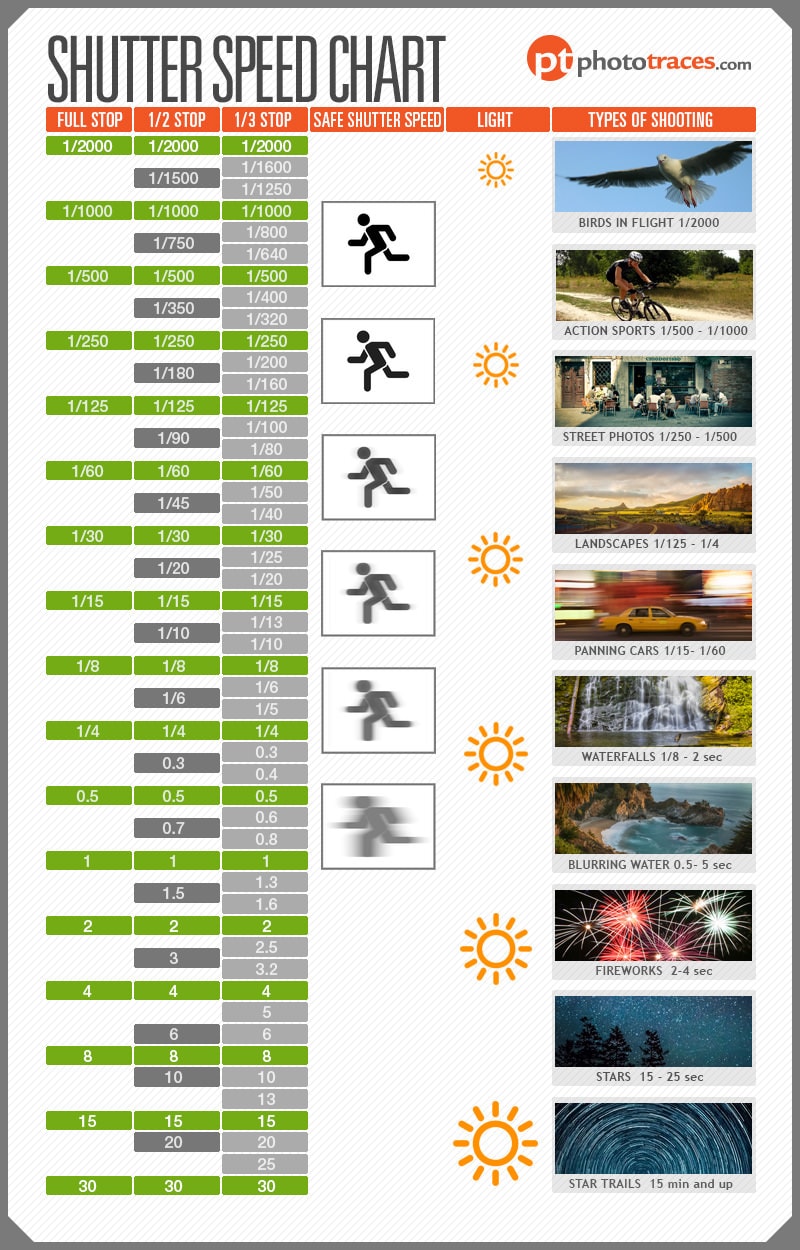
When utilizing the Shutter Pace Chart, you’ll start to understand how Shutter Pace exerts its affect in your images. Its utility extends past attaining the specified publicity; it transforms right into a dynamic software for controlling movement inside your photographs. With the Shutter Pace Chart at your disposal, you may completely discover the varied points of Shutter Pace.
Let’s break down the principle elements of the Shutter Pace Chart.
Full Cease, 1/2 Cease, 1/3 Cease
Shutter Pace, at the side of Aperture and ISO, is a crucial controller of publicity. For a considerable interval, understanding its software was comparatively easy and direct:
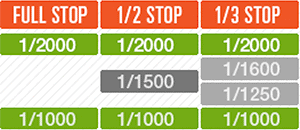

Doubling or halving the Shutter Pace alters the publicity worth by an element of two or 1-stop.
As an example, adjusting the shutter pace from 1/200s to 1/100s doubles the quantity of sunshine reaching the movie or sensor (1 cease). Primarily, should you preserve the shutter open twice as lengthy, you obtain twice the quantity of sunshine. Alternatively, should you shift the shutter pace from 1/200s to 1/400s, you lower the publicity by an element of two.
The appearance of digital cameras launched extra flexibility. We’re not restricted to adjusting the shutter pace by one cease alone. Some cameras allow us to alter the shutter pace by a half-stop (1/2 cease) and others by a third-stop (1/3 cease).
A half-stop (1/2) change in shutter pace alters publicity by 50%, whereas a one-third-stop (1/3) adjustment adjustments publicity by roughly 33%.
The shutter pace chart stays a useful software for estimating and calculating publicity extra effectively.
Save Shutter Pace
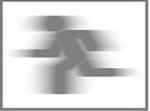

The time period “Protected Shutter Pace” usually refers back to the minimal shutter pace required to shoot a pointy, blur-free picture when utilizing a digital camera handheld, with out a tripod. This pace is deemed secure because it prevents the movement blur that may end result from digital camera shake when shutter pace is inadequate.
A number of components can affect the precise secure shutter pace, akin to lens focal size, the photographer’s steadiness, and the topic’s motion. Usually, a extensively accepted observe is to make use of a shutter pace at the very least double the reciprocal of the lens’s focal size. As an example, utilizing a 50mm lens would possibly require a secure shutter pace of 1/100s or quicker to forestall digital camera shake and preserve picture sharpness.
Capturing transferring objects in your body calls for specific consideration to shutter pace, vital for attaining sharp pictures. The visible help of a Protected Shutter Pace chart reveals that utilizing a shutter pace slower than 1/100s would possibly push us right into a probably dangerous zone concerning our sharp picture goal.
Gentle (Publicity)


This can be a easy illustration of the correlation between shutter pace values and the quantity the sunshine that reaches the digital camera sensor. It’s a basic idea that may considerably affect the publicity stage in your pictures.
Within the context of publicity, shutter pace is a vital issue. The connection is simple: quicker shutter speeds, indicated by a bigger denominator (e.g., 1/1000 seconds), permit solely a short second for mild to enter the sensor, leading to much less mild (decrease publicity) being captured.
Conversely, slower shutter speeds, represented by a smaller denominator (e.g., 1/30 seconds), prolong the period of publicity, permitting extra mild to be collected by the sensor.
The mastery of this relationship between shutter pace and light-weight is the essence of publicity management in images.
Shutter Pace Chart and Sorts of Taking pictures
That is what I name a Shutter Pace Chart Cheat Sheet that helps photographers use a shutter pace as a artistic software.
You utilize the quick shutter pace when you could freeze fast-moving topics or preserve readability in well-lit situations.
Slower Shutter Pace is beneficial in situations the place you want to convey movement, create mesmerizing long-exposure results, or seize well-exposed photographs in low-light settings.
Birds in Flight 1/2000s


When wildlife photographers observe and {photograph} a chook in flight it requires an excessive shutter pace of 1/2000s to get the chook completely sharp. The variation of this method is to scale back the shutter pace to 1/400s will end in a pointy physique of the chook however blurry wings. This can be a extra artistic strategy to wildlife images.
Motion Sports activities 1/500s – 1/1000s


You in all probability don’t want a quick shutter pace when photographing a golfer placing on the inexperienced however any sports activities that contain quick actions and actions will want particular consideration to shutter pace worth. Photographing skilled soccer sport or your children taking part in soccer would require shutter pace between 1/500s and 1/1000 to freeze the motion and to get sharp pictures.
Avenue Images 1/250s – 1/500s


On the whole, when photographing the streets the scene is in fixed motion. You may have folks strolling in direction of you or crossing the road, automobiles transferring and stopping, the right shutter pace is paramount not just for getting the proper publicity but in addition for avoiding blurry or tender photographs.
Landscapes 1/125s -1/4s


It’s onerous to pinpoint the shutter pace vary for the landscapes as a result of the methods and the setting you employ will fluctuate relying on should you shoot hand-held or on a tripod. The slower shutter pace of 1/8 or 1/4 is completely acceptable when utilizing a tripod however should you shoot hand-held you could scale back the worth to get sharp pictures.
Panning Vehicles 1/15s – 1/60s


The panning is among the most fascinating artistic approach that includes the shutter pace. Through the use of an extended shutter pace (1/15 -1/60) and monitoring the transferring object (automotive) when the shutter is open allow us to create the impact when the principal object is in focus and the atmosphere round it’s blurred.
Waterfalls or Quick Operating Water 1/8 – 2sec


Right here we’re coming into a extra artistic strategy to images generally and shutter pace specifically. By photographing a quick working water with the longer shutter pace permits us to create the visible impact which doesn’t exist in actual life. It’s like making a particular impact in motion pictures. You open up the shutter pace for an extended time frame and let transferring water to create movement blur impact.
Blurring Water 0.5 – 5 sec


Blurring the water is the inspiration of panorama images. Nothing makes the landscapes and seascapes dreamy and fascination like lengthy publicity impact within the water. When photographing ocean, sea, lakes, and rivers the place motion within the water is just not too quick or while you shoot from a better distance, you want a slower shutter pace worth in comparison with taking pictures the waterfalls to get this silky and easy impact within the water.
Fireworks 2-4 sec


It isn’t straightforward to {photograph} fireworks. You might be taking pictures at night time with vibrant lights popping up randomly in all places. The logic right here is to open the shutter pace lengthy sufficient to seize your complete lifespan of the shoot. You utilize a quicker shutter pace and you’ll get a tiny unimpressive mild within the vastness of the darkish sky and should you use too lengthy worth you’ll obtain the overexposed, blurry, and unnatural impact. I discover that the pace of 3-4sec works the perfect.
Stars (Astrophotography) 15-25 sec


Taking pictures the celebrities or astrophotography permits us to seize one thing that isn’t seen by the bare eye. Opening the shutter pace for an extended time frame helps us to amplify the dim lights of the celebrities.
Right here you could strike the proper stability. In the event you use a quick shutter pace the celebrities will probably be tiny and dim however should you use a pace longer than 30sec you get a strat path impact created by the fixed motion of the earth. So the shutter worth between 15 and 25 sec will produce sharp and vibrant stars.
Star Trails 15 min and up


This method permits us to benefit from the steadily spinning earth round its axis. In the event you open the shutter pace lengthy sufficient you may seize the trailing impact of the celebrities. The normal approach requires a shutter pace worth of quarter-hour or longer. However with the digital workflow you may simulate the identical trailing impact by taking a sequence of pictures, let’s say 120 of them, with 30-second publicity and mixing them in Photoshop or one other enhancing program. It is possible for you to to create the impact of 60 minutes of publicity.
Shutter Pace Fundamentals
Shutter pace is a part of the publicity triangle together with aperture and ISO. Shutter pace doesn’t solely management the publicity but in addition lets the artistic photographer to innovate and experiment with the movement. When understood to the core, shutter pace is just not a technical however a artistic software.
The Shutter as an Important A part of the Digicam
The shutter is the a part of the digital camera that is still closed to forestall mild from coming into and reaching (exposing) the sensor. When the shutter button is pressed, the shutter curtain opens to let mild attain the sensor. The sensor data the depth of sunshine whereas the shutter is open; that is how the picture will get captured.
Definition of Shutter Pace
Shutter pace is outlined because the time period between the opening and shutting of the digital camera shutter. It’s the time that the sensor or movie data the sunshine and, therefore, creates {a photograph}.
How Shutter Pace is Measured
Generally, shutter pace is measured in fractions of seconds. Nevertheless, some lengthy publicity photographs require a shutter pace of as much as 30 seconds or longer.
Shutter pace is often measured as follows:
1/2000s, 1/1000s, 1/500s, 1/250s, 1/125s, 1/60s, 1/30s, and so forth.
Every cease down the road (from 1/60s to 1/30s, for instance) will increase the period of time the shutter stays open by an element of two and, in consequence, doubles the quantity of sunshine that reaches the digital camera sensor.
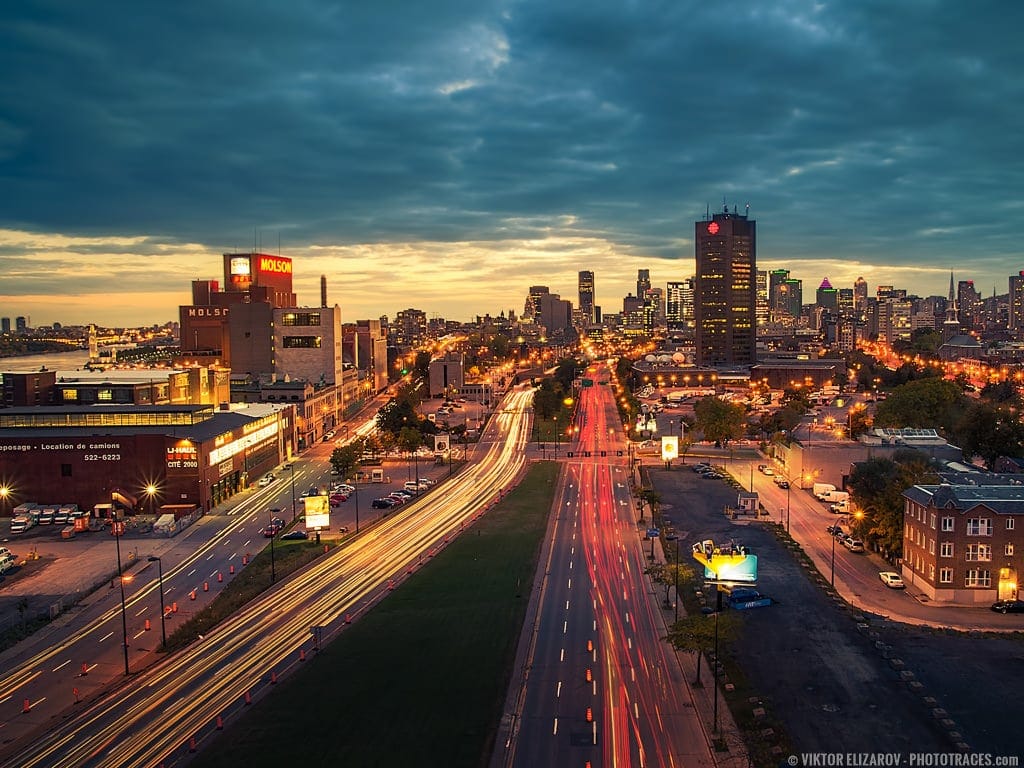

The Shake Blur
Usually occasions, shake blur occurs as a consequence of shake or motion within the digital camera whereas the shutter continues to be open. It may be averted through the use of a tripod with a distant shutter launch/timer or the minimal shutter pace rule. In the event you ever questioned why your pictures seem blurry or tender, it’s due to these slight actions whereas the shutter was open.
The Minimal Shutter Pace Rule for Shake-Free Pictures
When not utilizing a tripod or one other kind of assist, pictures are likely to have ‘shake blur’ if the shutter pace falls under a specific quantity. This has been calculated and is given as:
1/focal size or 1/100, whichever is quicker
Due to this fact, if you’re utilizing a full-frame digital camera with an 85mm lens, the minimal shutter pace you could preserve is 1/100 (as a result of 1/100 is quicker than 1/85). Nevertheless, if you’re utilizing the identical digital camera with a 300mm lens, the minimal shutter pace is 1/300s.
On a crop body sensor, multiply it with the crop issue. For instance, an APS-C sensor digital camera with the identical 85mm requires that you simply use a minimal shutter pace of 1/(85 x 1.5) = 1/127.5. Right here, you’ll use 1/150 and never 1/125 to keep away from any probability of shake.
In case your lens has a picture stabilization characteristic, you may scale back it by that many stops from the minimal shutter pace. For instance, if it’s important to use a minimal shutter pace of 1/125, however your lens has a 1 cease IS, you need to use a shutter pace of 1/60.


Freeze the Second or Sooner Shutter Speeds
Sooner shutter speeds are likely to freeze the second, which is often used for wildlife images and water splash images amongst many others. A chook in flight might require you to shoot at 1/2000s or quicker. Freezing the movement of water might require you to shoot at 1/1000s or quicker relying on the circulate of water. This method can also be utilized in motion photographs.
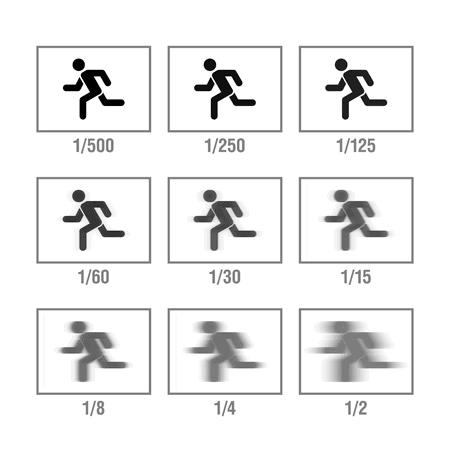

For instance, freezing the movement throughout racing occasions can produce tack sharp footage with tiny bits of dust frozen mid-air as they splatter throughout the tires.
Artistic Movement Blur or Slower Shutter Speeds
Slower shutter speeds have a tendency to provide movement blur. That is achieved by conserving a serious a part of the topic, or at the very least some a part of topic, nonetheless whereas the transferring elements are naturally blurred in movement. This approach is frequent in taking pictures mild trails and inventive dance actions. Star path images relies on the movement blur of the celebrities and their motion.
Taking pictures landscapes that characteristic water additionally includes blurring the movement to make the water seem silky easy. Many photographers do that when taking pictures waterfalls to mimic the fashion utilized in work.
When utilizing prolonged publicity occasions, that is generally often known as lengthy publicity images. Star trails, nightscapes, and Milky Method images are grouped on this class. Sometimes, the shutter pace may be very gradual, which makes it not possible to shoot with out a sturdy assist like a tripod.


Setting the Shutter Pace – Two Main Modes
Shutter precedence mode helps you to set the shutter pace whereas the digital camera mechanically units the aperture based mostly on the sunshine situations, metering mode, publicity compensation, and locked-in ISO settings. In guide mode, all of the settings are utterly guide together with the shutter pace and aperture; metering solely provides a tenet for the proper publicity.
The place Can You Discover the Shutter Pace?
The shutter pace will be discovered on the underside left of the viewfinder display or on the highest of the digital camera’s LCD panel (not all cameras have this characteristic). Additionally, you’ll find the settings displayed on the digital camera’s rear LCD display. Shutter pace is often denoted as a quantity as a substitute of fractions. For instance, 1/125 is denoted as 125, and 1 second is denoted as 1. Nevertheless, this conference has modified in a number of latest digital camera fashions.
Shutter Pace Chart | Last Ideas
The Shutter Pace Chart is the important thing to understanding how shutter pace brings life into your photographs. It controls picture circulate, enabling you to freeze the motion, produce a artistic blur, and even stack star trails, primarily appearing because the gas that propels your creativity. Crucially, timing your shutter button press appropriately in coordination with the suitable digital camera settings may end up in beautiful pictures.
The Shutter Pace Chart is your information to completely harnessing the ability of shutter pace, reinforcing your capacity to create outstanding, well-composed photographs that really encapsulate your imaginative and prescient.